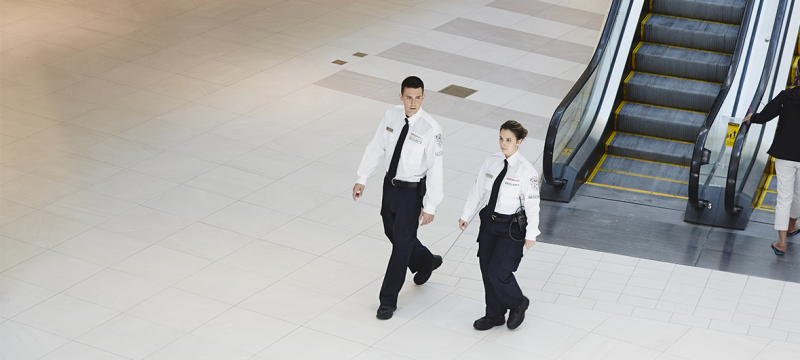
During a decades-long career in retail loss prevention and shopping centre security, Brian Evans has seen every deceit possible, but he still respects the will of thieves, criminals, and malcontents to steal goods, harm innocent people, and disrupt shopping for the general public.
He started as a store detective in his 20s working, then was a police officer for many years. After that, he got into loss prevention, eventually heading that function at the Hudson Bay Company and other notable retailers.Today he’s Regional Manager, Consulting & Investigations, Western Canada for GardaWorld Protective Services.
We caught up with Brian at a recent meeting in Toronto to tap into his experience and expertise for some insights on loss prevention and safeguarding shopping centres.
What are some of the biggest security challenges specific to the retail stores and shopping centres?
The biggest challenge is the vast area that a shopping centre or mall can cover, plus the number of people. It can be like protecting a small city. Take the Heartland Town Centre in Mississauga, Ontario, for example. It’s one of Canada’s largest shopping centres, with 164 stores, lots of them big box stores, and restaurants. In all, its retail space covers more than two million square feet and that doesn’t count the parking lots, where you could probably land a small plane on Christmas morning, if you had to.
Providing security to that size of facility, especially during peak periods when literally tens of thousands of shoppers are flowing through the various stores and common areas, is a huge undertaking. Almost inevitably in a population that big, you have gang members, shoplifters, and purse snatchers, along with people with health problems, both physical and mental. You have to stay alert and response-ready.
That’s certainly a big challenge. Any others?
In contrast, shopping centre security is not contracted to protect the retailers, but to safeguard the common areas, like the food courts, walkways, and parking facilities. Where the challenge comes is that often the shopping centre security doesn't communicate fully and regularly with the store owners and often not with the shopping centre’s own operations people. These gaps can allow shoplifting or other criminal trends to go unnoticed, simply because the right people are not sharing information.
How can a professional security firm like GardaWorld help protect large shopping centres from the bad elements you just described?
Our GardaWorld Protective Services guards are trained to recognize and monitor the various kinds of potentially disruptive and criminal people who may frequent shopping centres, then respond appropriately to any incidents they may cause. It also takes experience and expertise, combined with careful planning, execution, and communications, to maintain a vigilant, ready-to-respond posture — but with disciplined restraint. Communications is especially important: internally, across the entire security team and with retailers, plus externally, with public safety resources.
And how can stores reduce shoplifting theft?
There are five steps that every retail employee should be taught to combat shoplifting, but unfortunately most aren’t:
- First is the “10×10 Rule.” That is, an employee should greet every new customer who walks in the store within 10 feet and 10 seconds of entry.
- Second, employees should greet the person by looking into both their eyes. If the person avoids eye contact, then they might be hiding a bad intent.
- Third, even if employees are helping another customer, they should approach the individual, taking a few steps toward them. (They can apologize to the other customer and tell them that they’ll be right back.)
- Fourth, if the person acts suspicious, employees should then offer them help with whatever the person is looking at, keeping in mind that they may have already shoplifted an item and are hiding it.
- Fifth, if none of these actions work, employees should pick up the phone, punch a few buttons, as if speed-dialing, and loudly say, “Yes, security. Please come to Fred’s Dry Goods immediately.” They don’t have to actually talk to anyone.
In most cases, a potential shoplifter will exit the store on their own without stealing anything. And this approach is much more effective than anti-shoplifting technology, which experienced thieves know how to bypass and, too often, employees ignore when the alarms go off.
If you’re a retail store owner or a shopping centre operator, you can contact GardaWorld's security services for a no-cost, no-obligation assessment of your security requirements and risk mitigation.








